There are lots of reasons that hand knit socks might not last as long as you had hoped they would, but there’s one reason we knitters don’t like to talk about very often. It could be your feet themselves.
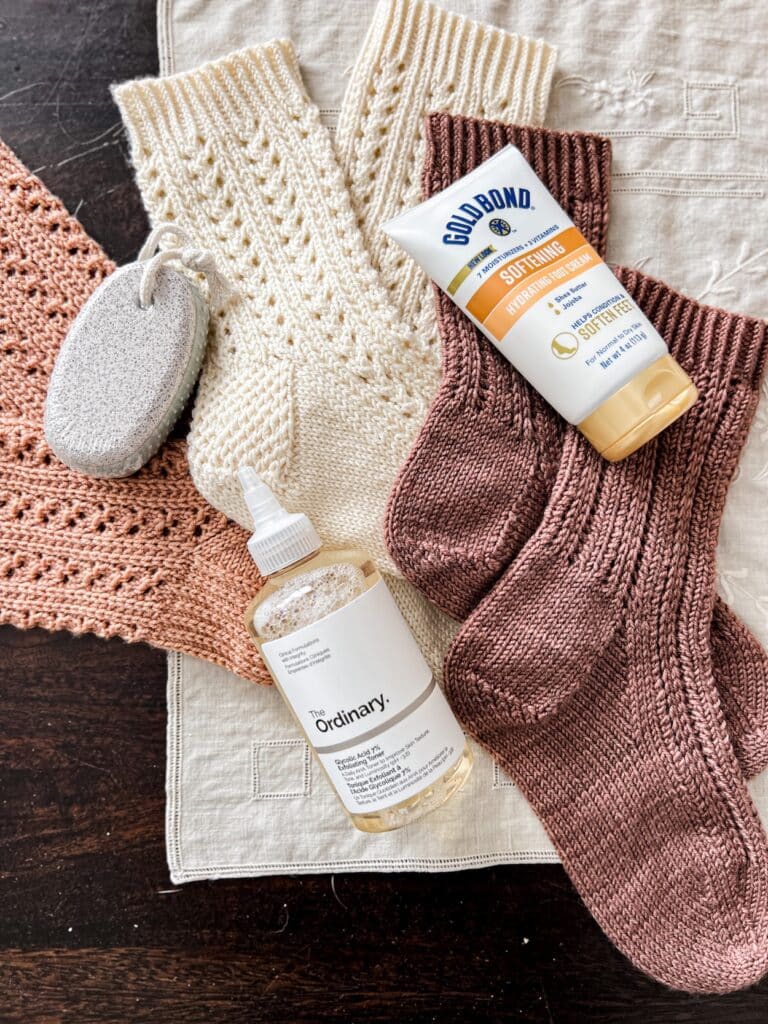
You see, in wintertime especially, it’s really common for feet to get dried out. That’s because the air tends to be dryer when it’s colder, and that dry air dries out our skin, too. The rougher your feet are, the more they are going to snag and scrape against the inside of your knit socks. This additional snagging will cause your socks to wear out more quickly. Think of it like a piece of sandpaper rubbing against your knitting all day long.
So an unexpected tip for making your knit socks last longer? Take care of your feet. Here are four of my favorite techniques for doing that.
This post contains affiliate links, which means if you choose to buy something through those links, I’ll receive a small commission at no extra cost to you. I will always identify affiliate links for you. Thanks for supporting my work!
Step One: Moisturizing
Your first line of defense against rough winter feet is keeping them well moisturized. I’m a big fan of this lotion from Gold Bond (affiliate link), which has been pretty effective for me during wintertime. I like to put some on before bed and then pop a pair of cotton socks over them.
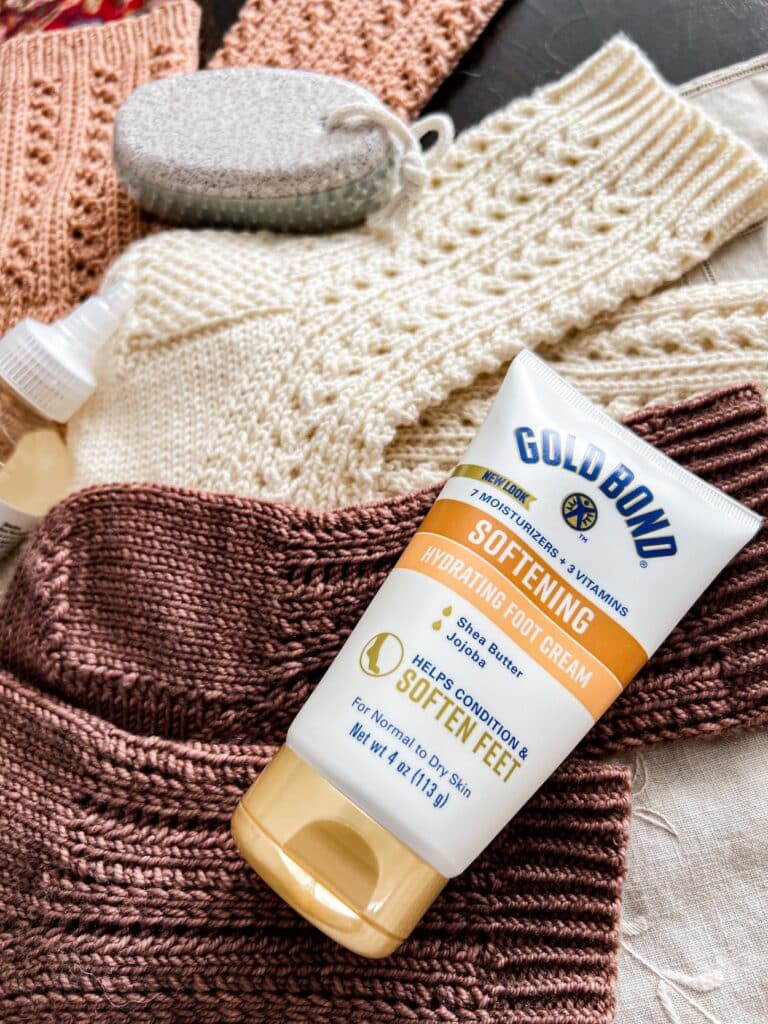
While you can theoretically continue to use your handknit socks with the lotion, it is pretty thick and gloopy stuff, and I’m not sure how easy it would be to wash it out of the socks when the time comes. Much easier to just pop some cotton socks in the washer and dryer.
Another popular approach is to layer on a lotion and then put petroleum jelly over it. The petroleum jelly helps act as an occlusive that helps prevent the lotion’s moisture from evaporating and helps it soak into your skin better.
Step Two: Exfoliation
It’s normal for dead skin to build up on your feet, especially in dry weather. We can help that dead skin slough off by exfoliating a bit.
Exfoliators tend to fall into two categories: chemical or mechanical. I like to use a mix of both to keep my feet soft and keep them from shredding my handknit socks.
For a chemical exfoliant, I really like this 7% glycolic acid from The Ordinary (affiliate link), which I just squeeze onto a washcloth and rub onto my feet a couple times a week.
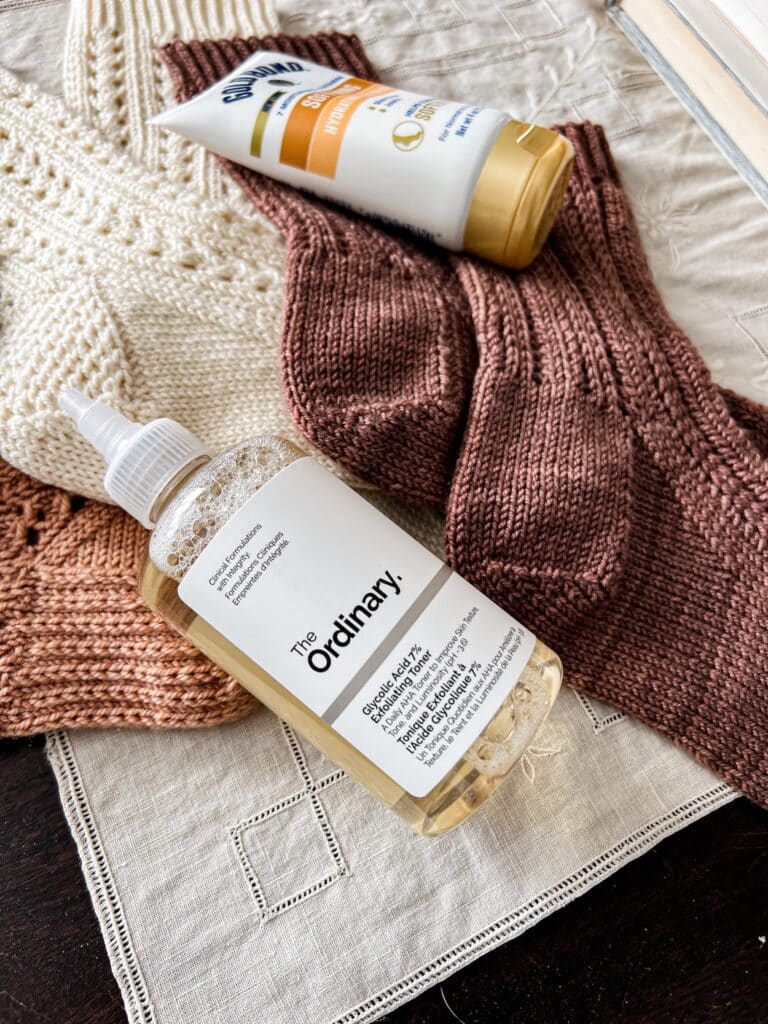
Sometimes, if you’ve got a lot of dead skin, you might need to exfoliate a little more aggressively. I’m a big fan of a good old pumice stone (affiliate link) for when the calluses need a little more intense treatment.
If things have really progressed, you might want to get a pedicure and have a professional help you work down those calluses. Don’t feel bad if it’s been a while or if you’ve never had one at all. They’re trained professionals who are used to dealing with all sorts of situations. If your feet require a lot of work, though, a generous tip is always a good idea.
Step Three: Trimming Toenails
Dry air can make our nails more brittle, too, especially as we age and those nails grow more slowly. If you’re like me and have a magical ability to find every piece of furniture in a room by stubbing your toe on it, this can lead to more chipped and broken toenails in winter.
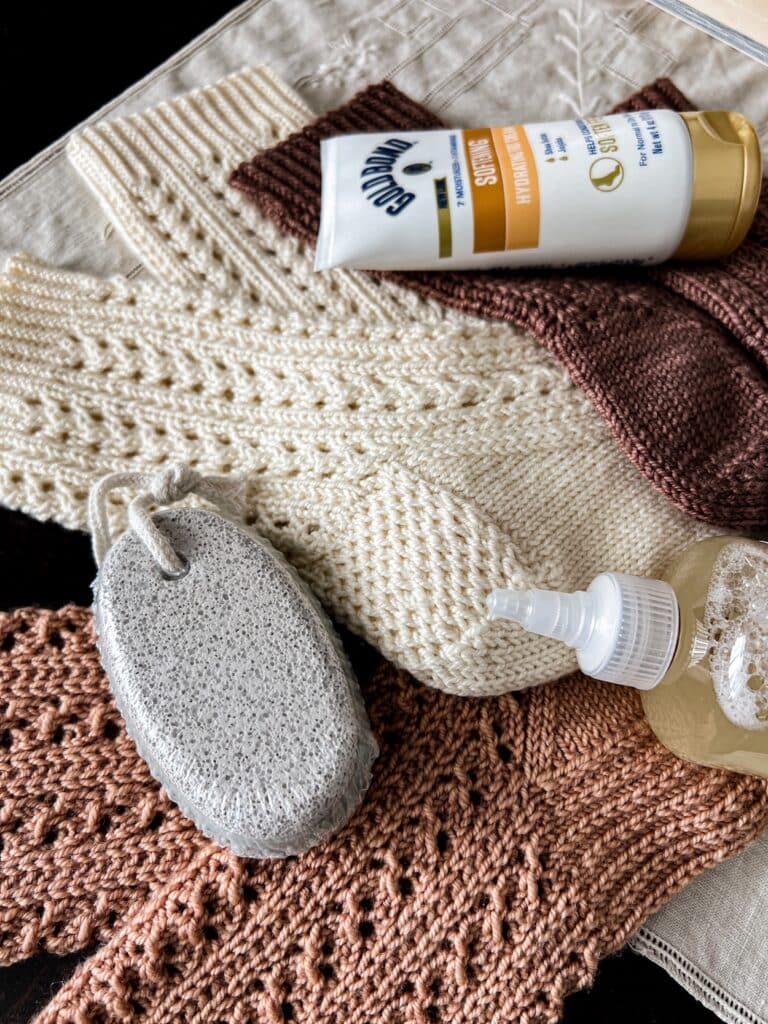
And those chipped and broken nails can be really sharp! Which means you need to keep an eye on them if you don’t want them cutting holes in your socks. These toenail clippers (affiliate link) are a little easier to grip than other varieties, and they have a little contraption to catch your clippings, which is nice.
Many toenails are thicker and wider than most fingernails, which means you may find that a regular nail clipper isn’t enough to do the job. Toenail clippers have larger components which means they can clip a wider nail and can exert more force to cut through a thicker nail.
Step Four: Hydration
We talk a lot about moisturizing with lotions and creams, but staying hydrated can also be a part of the puzzle. A small study found that while hydration alone isn’t as helpful for dry skin as applying moisturizers, the two together seem to be a pretty good combination.
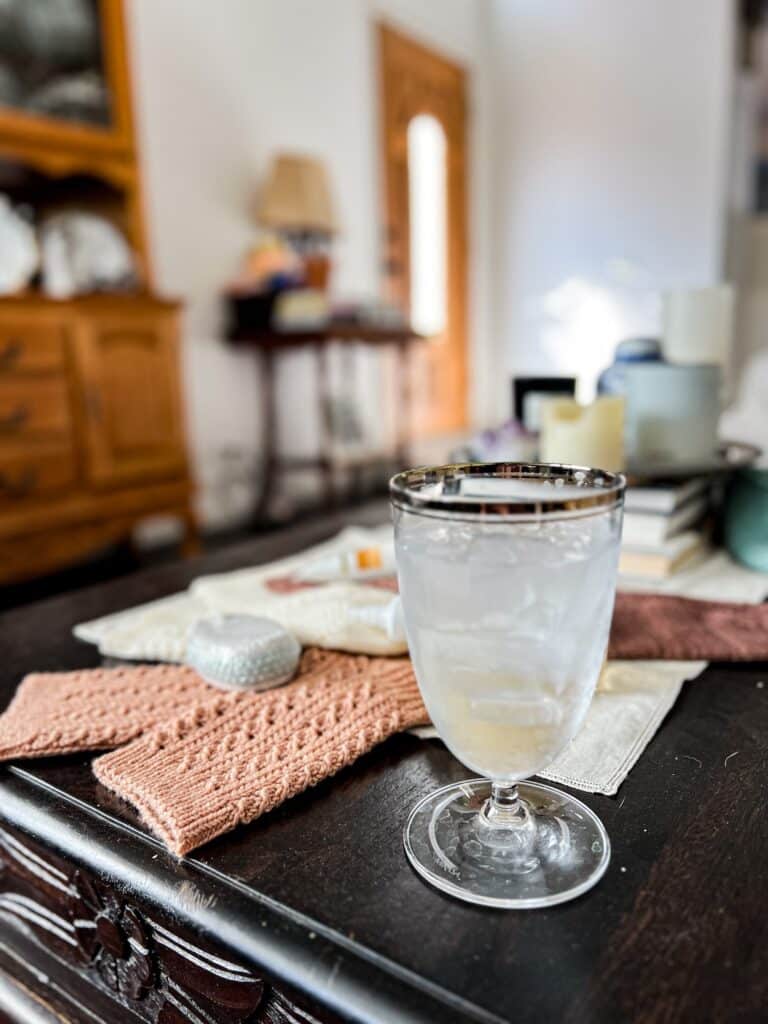
If you find that your feet are drying out in the winter time and you haven’t been drinking much water, you might consider increasing your fluid intake. You don’t have to suddenly drink an extra gallon a day, but an extra glass or two probably wouldn’t hurt (but as with anything, know yourself and your unique body’s needs!).
Let’s stay connected!
Join my newsletter for 30% off all new releases, regular updates with helpful tips and tricks, first crack at registration for upcoming workshops, exclusive discounts, and more.
Prefer to read without ads? Join my Patreon, which starts at just $1 a month!
Join the A Bee In The Bonnet Facebook Group to participate in knitalongs and other fun community events
Come hang out with me on the A Bee In The Bonnet TikTok
Follow along on the A Bee In The Bonnet Instagram
Get inspired via the A Bee In The Bonnet Pinterest

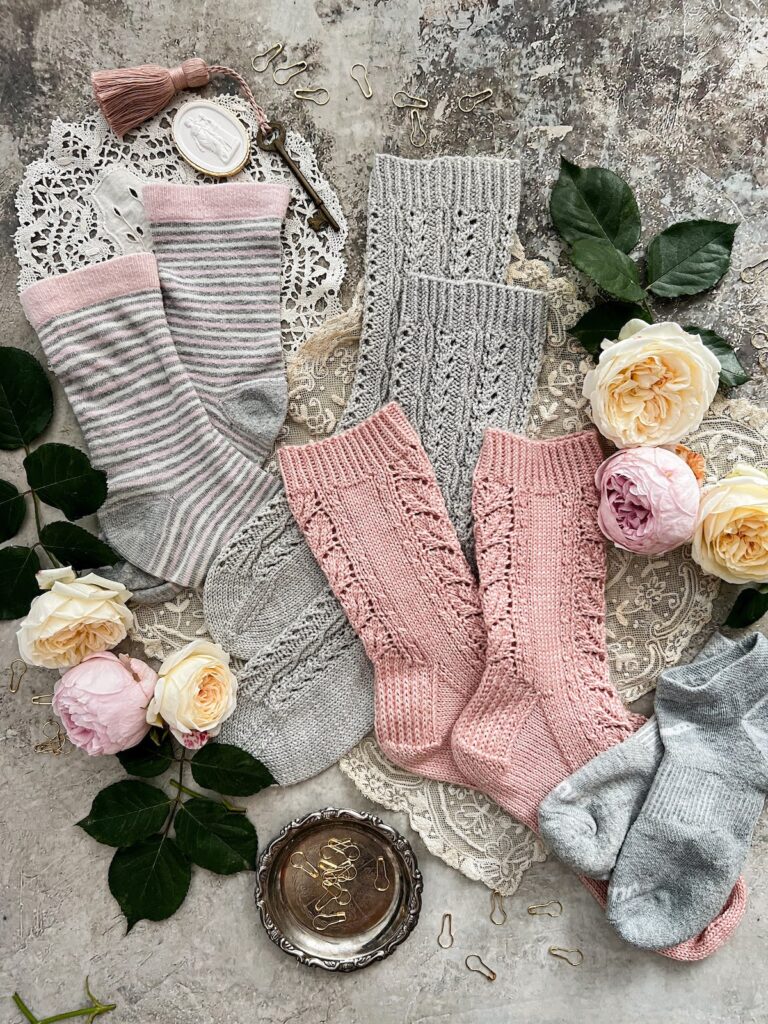
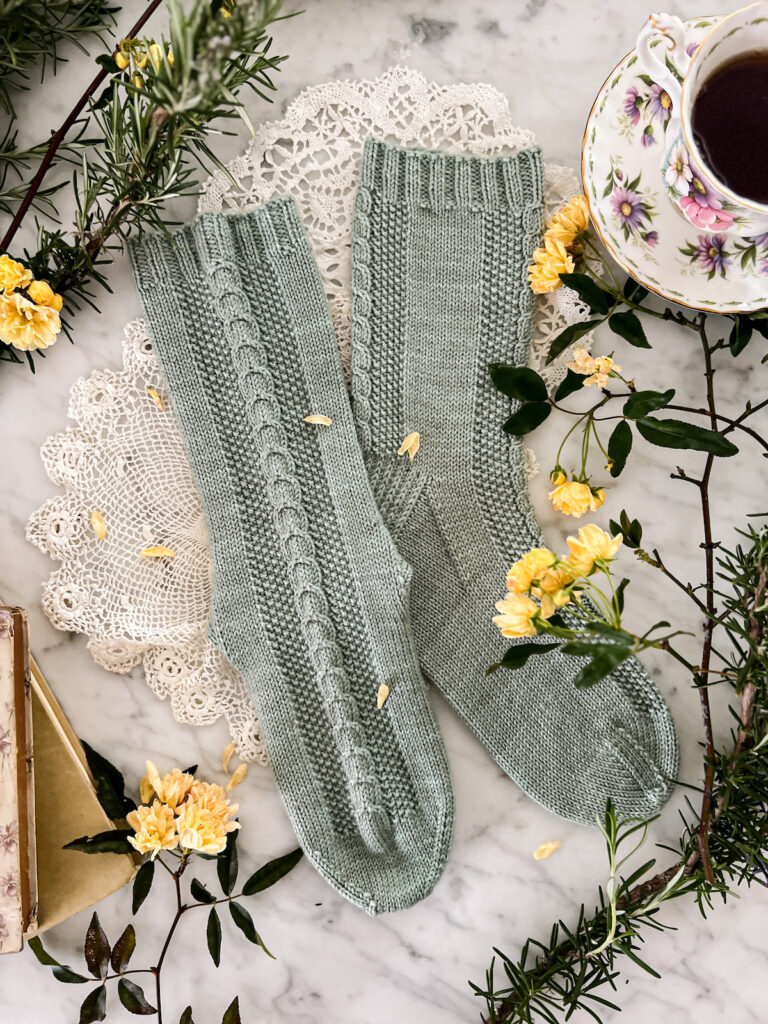
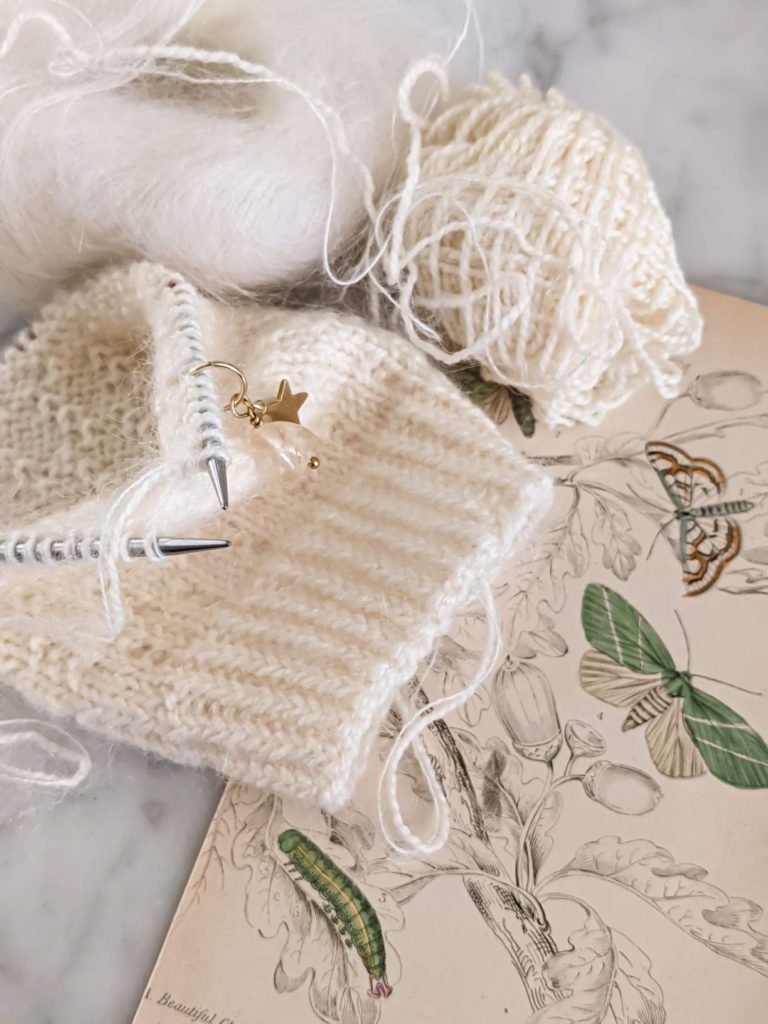
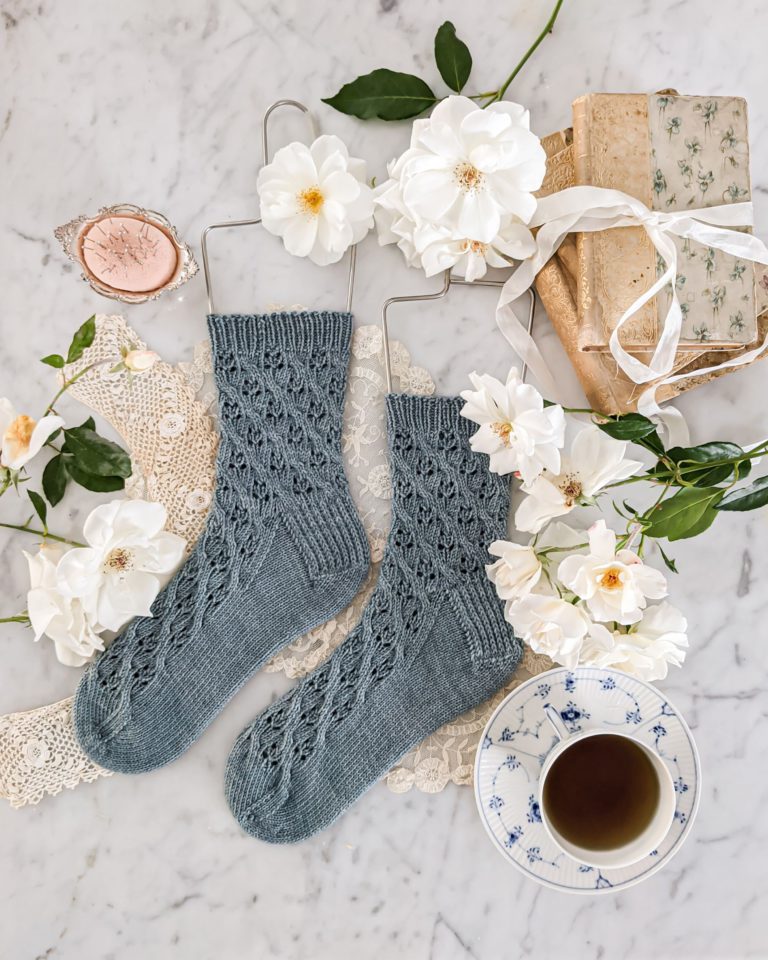
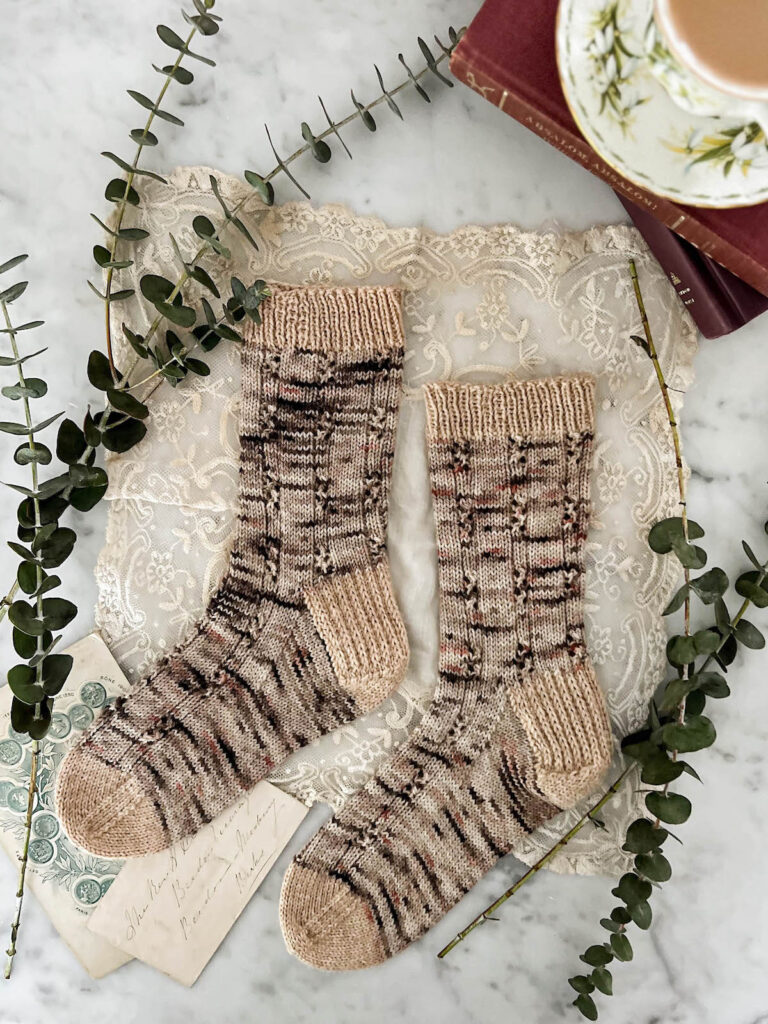
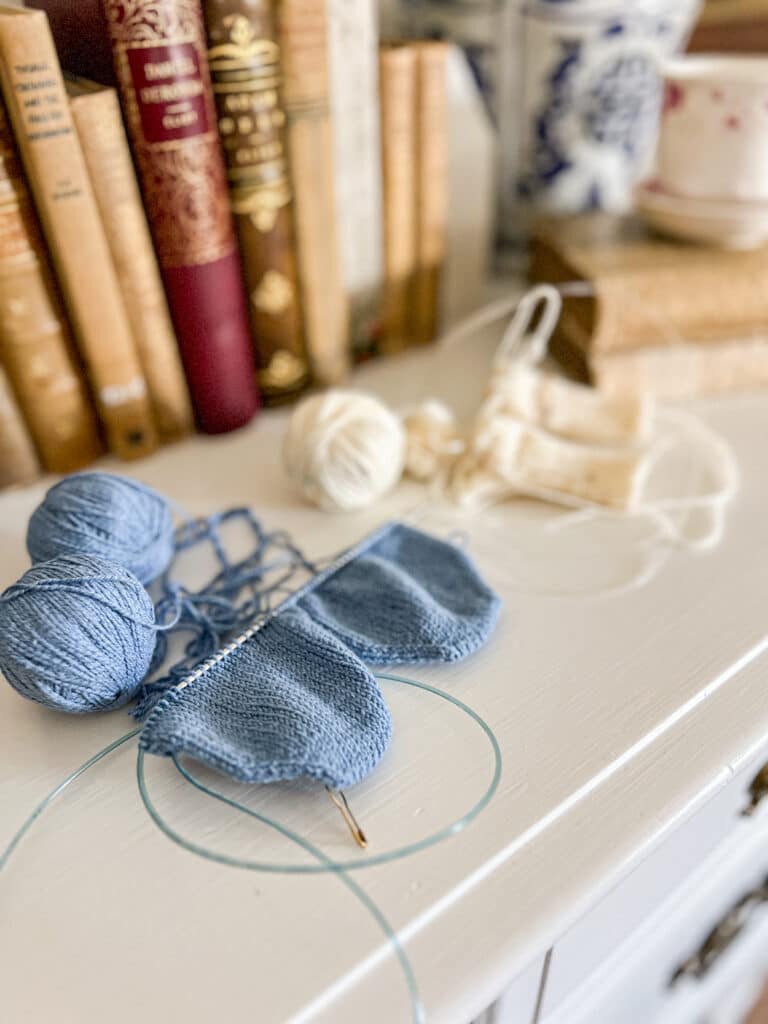
Such beautiful socks, I have started knitting your patterns and they are easy to follow and very interesting to knit. What is the pattern name of the cream colour socks in this blog? Thank you for your website.
I’m so glad you’re enjoying my patterns! The cream-colored socks here are the Cromulent Socks. They’re squishy house socks in sport-weight yarn.